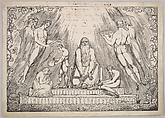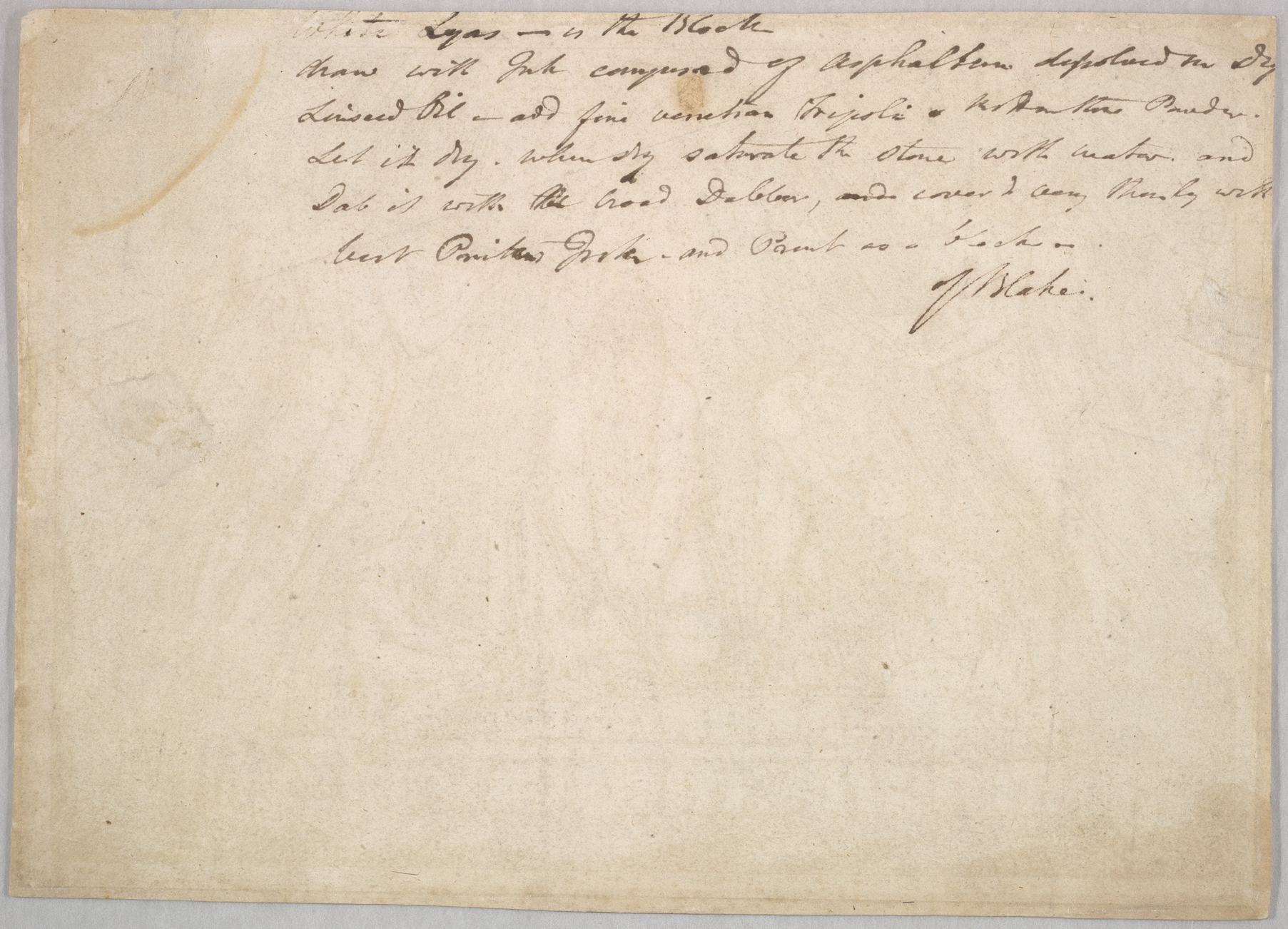Enoch
William Blake British
Not on view
This lithograph—the only one by Blake—suggests that artistic creativity springs from closeness to the divine. The composition centers on Enoch, an Old Testament figure described in Genesis as having "walked with God." Representing theological speculation that the patriarch invented writing, Blake placed him on a dais holding a book inscribed with Hebrew letters, while Prophesy and Inspiration hover at either side. Below, Enoch's children practice painting, music, and poetry, suggesting that all the arts flow from writing. The technique demonstrates the artist's experimental approach to printmaking. Invented in Germany, lithography reached London in 1800. Attracted by the new process, Blake worked with the patent holder, Georg Jacob Vollweiler, but devised his own unique mixture of acid relief and lithography to produce Enoch. Only four copies of the print are known.
Due to rights restrictions, this image cannot be enlarged, viewed at full screen, or downloaded.
This artwork is meant to be viewed from right to left. Scroll left to view more.




